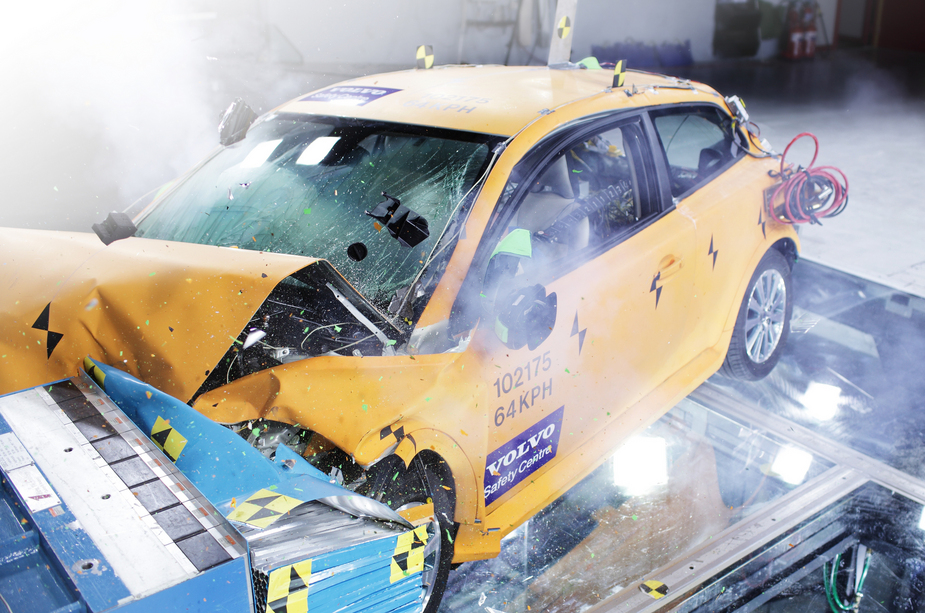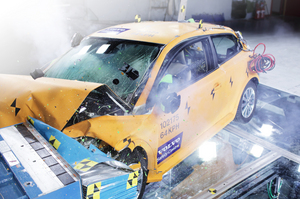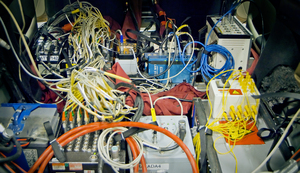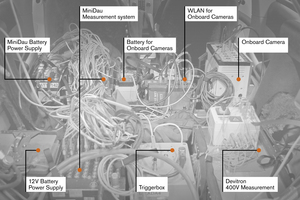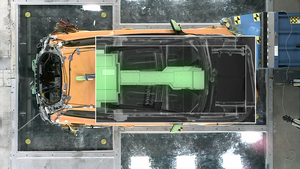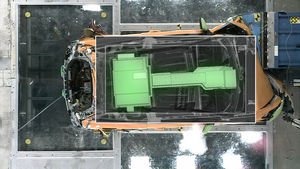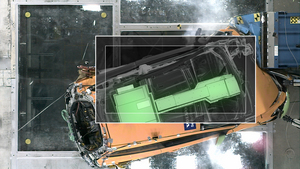|
Send this page to a friend! Fill in the form bellow | ||
news
Volvo displays crash-tested C30 Electric in Detroit
At this year’s North American International Auto Show Volvo is focusing on the importance of electric car safety. To do so, the brand is showcasing a crashed C30 Electric.
The electric vehicle in Volvo’s stand was tested in a frontal collision at 64 km/h. The goal is to show how a safe electric car looks after a collision.
“Our tests show it is vital to separate the batteries from the electric car's crumple zones to make it as safe as a conventional car. In Detroit we are the first car maker to show the world what a truly safe electric car looks like after a collision with high-speed impact,” says Volvo Cars' President and CEO Stefan Jacoby.
With interest in electric cars growing considerably Lennart Stegland, director of Volvo Cars' Special Vehicles division explains that the challenge is to create vehicles that are comfortable, as usable, as fun to drive and as safe as other cars. And the same has to happen with the electric variant of the C30.
The C30 Electric featuring at NAIAS was crash-tested in early December 2010 and Jan Ivarsson, Senior Manager Safety Strategy & Requirements at Volvo Cars explains that it “offers the very same high safety level as a C30 with a combustion engine. The front deformed and distributed the crash energy as we expected. Both the batteries and the cables that are part of the electric system remained entirely intact after the collision”.
In terms of structure an electric car is considerably different from a conventional car, with different components creating new safety challenges.
For example the Volvo C30 Electric, in order to deliver the range of 150km, needs a battery pack that weighs about 660 lb (300 kg), which occupies more space than a conventional fuel tank. The combustion engine has been replaced by a more packaging-efficient and lighter electric motor. And we can’t forget the 400 Volt high-voltage electric system.
"Our far-reaching research emphasises the importance of separating the lithium-ion batteries from the car's crumple zones and the passenger compartment. This is the same safety approach we apply with regard to the fuel tank in a conventional car. Another challenge is to reinforce the crumple zones at the front where the smaller motor occupies less space than usual," says Jan Ivarsson.
Other safety measures on the C30 Electric include protection of batteries. Placed in the traditional fuel tank position the batteries are encapsulated, with all the structure around them being reinforced. The cables are all shielded also to increase safety.
The electric car is also equipped with a crash sensor that also controls the fuses and is able to cut the power in 50 milliseconds. The power is also cut when an earth fault is detected, for example when a damaged cable comes into contact with the body frame.
Finally, while in a conventional car the distribution of the incoming collision forces is helped by the combustion engine, in the C30 Electric the frontal structure had to be reinforced in order to help absorb the increased collision energy created as a result of the car's added weight.
Volvo is planning to launch the Volvo C30 Electric in the Swedish market in the beginning of 2012. Currently, the brand is starting a testing program with 250 vehicles that will be used by a number of companies and authorities.
Encyclopedia | Engine -- Battery Type -- Top Speed 81 mph Transmission -- Maximum power -- Type -- Fuel Electric Range -- | price -- annual ownership cost -- |
Contribute
more about Volvo
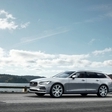
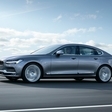
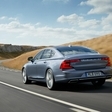
latest news




